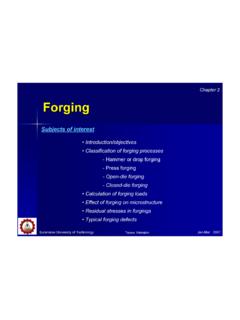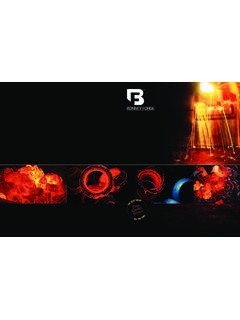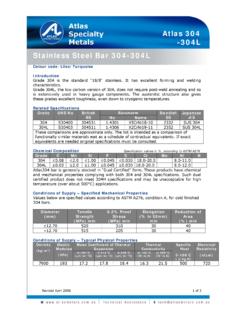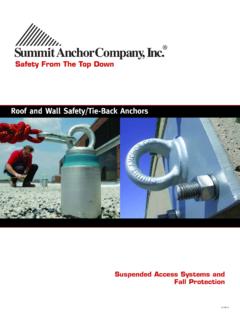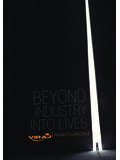Transcription of DC53 - Carrs Tool Steels Ltd.
1 Typical Characteristics Higher hardness (62-63 HRc) than D2 after heat treatment Twice the toughness of D2 with a superior wear resistance 20% higher fatigue strength than D2 Smaller primary carbides than D2 protect the die from chipping and cracking Secondary refining process (DLF) reduces Impurities Machines and grinds up to 40% faster than D2 Less risidual stress after wire EDMing The chart top right shows where dc53 properties lie compared with conventional tool Steels and powder metallurgy tool steelsTypical Applications Plastic Moulds Stepped punch and press-punching dies Concrete sprayer parts, rotor plates Swaging dies and backers Dies for cold forging Thread-rolling dies for heat-treated bolts Forming dies Stripper plates for lead fame blanking Gauges Screws for injection moulding machinesColour CodeDC53 Steelbright Works, Coneygree Road, Tipton, West Midlands DY4 8XQ, United KingdomTel 0121 522 6789 Fax 0121 522 6770 Email.
2 dc53 is stocked in a range of diameters and plate and cut to customers sections from 25mm3 up to 430 X 430 X 150mm can be delivered fine milled on all six faces to - 0+ and with squareness guaranteed to Studies (More available on request)Shearing mild steel rolled 12,000 operations before tool failure using D2 material increased to 30,000 using dc53 Punching D2 compression punch was achieving only 2,000 operations before regrinding or failure. Changing to dc53 resulted in more than 25,000 operations before Works, Coneygree Road, Tipton, West Midlands DY4 8XQ, United KingdomTel 0121 522 6789 Fax 0121 522 6770 Email : is required, double temper between 200 and 300oC (depending on application). Note the material tempered at the lower temperature should not be subjected to subsequent high temperature processes such as PVD.
3 For the fullest details of application related heat treatments, please ask for our detailed publication on the subjectWeldingLower minimum pre-and post - heating temperature than D2 reduces the incidence of weld cracking and simplifies welding. Low hardness decline in heat affected zone minimises any deterioration in performance. Hardening Vacuum FurnacePre-heat to 300-400oC and then to 800-850oCallowing sufficient time to equalise. Raise to 1,020-1,040oC and allow soaking time according to the chart below:Maximum Section (mm)Soaking Time (mins)100 and below20-30 mins per25mmAbove 10010-20 mins per 25mm Quenching Vacuum FurnaceThe high hardenability of this steele enables it to be satisfactorally quenched in a vacuum furnace.
4 Surface TreatmentsSurface treatments such as CVD, PVD, TD and Nitriding require the use of relatively high processing temperatures. While this can be a problem with standard D2, the higher through hardness of dc53 at elevated temperatures will allow these surface treatments to be used temper according to the hardness and toughness charts below. As with D2, a third temper at 400oC should be carried out to avoid any chance of any delayed grain growth and distortion. This is the preferred heat treatment for most applications as high hardness will be the primary consideration. Where maximum HEAT TREATMENTF urther informationDetailed information covering physical properties, welding and surface treatments are available, please ask.
5



